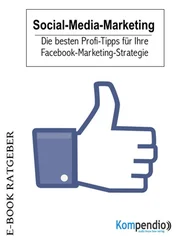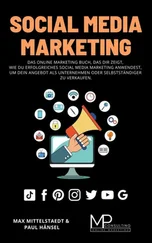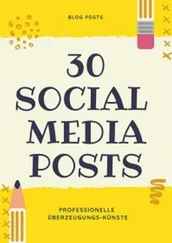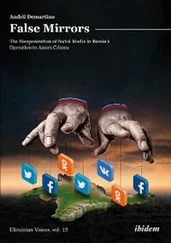Introduction
Pervasiveness of Social Media in Higher Education
Many things come to mind when we are asked to think of higher education. Some immediately envision lecture halls, fast food, fraternities, pep rallies, parties, caps, and gowns. However, these days social media is as much a part of college life as homework. Over the last two decades, the percentage of college-aged individuals posting, following, and sharing online has constantly risen. In 2005, 7% of 18 to 29 year olds were using social media; five years later, that number grew exponentially to 76%; by 2019, 90% of people in this age group were using social media platforms to connect (Pew Research Center 2019a). Many modern-day college students belong to the group known as digital natives, due to growing up in a world with the existence of digital technology (Prensky 2001, p. 1). Undergraduates and graduate students’ lifelong relationship with electronic devices and digital media creates famriliarity with technology and in turn, enables many to comfortably use social media as a vehicle for culture, news, entertainment, and relationships.
Social media is a form of computer-mediated communication. When joining a social network, individuals create profiles that enable them to utilize the platform by viewing, creating, and sharing content. These Web 2.0 applications rely on user-generated content and allow people to build personalized networks in which they can exchange text, images, and videos.
Although social media is popular with college-aged adults, not all are racing to create profiles on the same platforms. Social networks vary in popularity depending on the age of the user. However, Facebook is favored by a wide range of age groups. Just over three quarters of 18 to 24 year olds have Facebook accounts (Pew Research Center 2019b). Co-founded by Mark Zuckerberg, Dustin Moskovitz, Chris Hughes, and Eduardo Saverin in 2004, Facebook began as a network designed exclusively for college students before allowing others to join in 2006 (Facebook 2020). Capitalizing on its success and the popularity of the virtual wall, which allows users to create a digital collage of their lives, Facebook has used additional social media tools as bricks to build its place in the world of computer-mediated communication. The company added Messenger in 2011, allowing users to send direct messages (DMs) to others on the network for private exchanges (Facebook 2020). A year after introducing this intimate communication feature, the company hit a milestone in popularity. “Facebook became the largest social network in the world, with more than one billion users as of 2012, and about half that number were using Facebook every day” (Hall 2019). Also, in that same year, Instagram was acquired by Facebook; two years later in 2014, WhatsApp, a text, phone, and video application, connecting people globally through WiFi, was purchased by the Zuckerberg led company (Facebook 2020). Facebook offers a myriad of ways for users to connect with others online. The platform offers asynchronous options that allow users to post and reply at their convenience as well as synchronous features that enable users to broadcast their lives in real time or call someone in their network without even knowing their mobile number.
Some groups of people are more likely to use Facebook than others. When it comes to this social site, those who have walked across the stage for a collegiate graduation are more likely to belong to the network. Specifically, of those who have earned at least one college degree, 74% use Facebook compared to 61% of adults who have obtained a high school diploma or less (Pew Research Center 2019c). When one graduates with a degree, they leave campus with an expanded network that may be sprawled out over a state or country, so social media provides a convenient way to stay connected. Furthermore, there is also a distinction between gender with Facebook users. In the US, three quarters of women use Facebook compared to 63% of men (Pew Research Center 2019c). By analyzing the predictors of social media usage, colleges and universities can identify methods to help their students navigate platforms in ways that will complement academic and professional goals.
By examining the Facebook activity of 13 to 17 year olds, there can be some insight gained on the social networking habits of incoming undergraduates. According to one study, “lower-income teens are more likely than higher-income teens to use Facebook” (Pew Research Center 2018a). A closer look into the data reveals the financial divide. Although many US teenagers often use similar social sites despite a breakdown of further demographics, 70% of teens raised on an annual household income under $30,000 have Facebook accounts compared to 36% of their counterparts living in a home with an annual income over $75,000 (Pew Research Center 2018a). Utilizing data on socioeconomics and social media usage can introduce ways for institutions to connect with audiences, such as first-generation college students, and share knowledge on academic programs and resources available.
Instagram is another popular platform with college-aged adults. Commonly referred to as “IG,” or “The Gram,” this social site is also synonymous with (a) short-lived stories that disappear from the site 24 hours after they are posted and (b) filtered photographs, which allow users to alter their images with graphics and airbrushing. Just under six years after hitting the social media scene, Instagram reached “half a billion monthly active users, 300 million of whom [used] the photo-sharing service daily” (Laurent 2016). Instagram is wildly popular with many athletes, actors, and musicians, which college students have an interest in and frequently follow on social sites. It is not uncommon for celebs to share breaking personal news and exclusive photos on these platforms – capturing the attention of fans. As of 2019, nine years after its release, three quarters of 18 to 24 year olds had an account on Instagram (Pew Research Center 2019b). IG is beginning to eclipse Facebook as a favorite among college students.
Snapchat is a media sharing site that has garnered the attention of college-aged adults as well. Among those aged 18 to 24, 73% have a profile on the platform (Pew Research Center 2019b). Unlike social networks with some features that vanish a day after posting, content shared on Snapchat is designed to disappear immediately after viewing. One study found the fleeting quality of messages on the platform “reduces self-consciousness in communication” for many university students using the app, resulting in unique, humorous, and vulnerable exchanges (Xu et al. 2016, p. 1672). In a virtual world where many posts can live forever through screenshots and sharing, Snapchat offers a veil of privacy due to its short-lived nature. This may be comforting to some college students who worry about their light-hearted, dorm room antics coming back to haunt their professional life down the road.
The method of concise writing, taught during the undergraduate years, may unintentionally help prepare students for Twitter, a microblogging platform. In the US, the typical Twitter user is more likely to belong to a younger age group, hold a degree, and earn higher wages compared to the average adult in the nation. “Overall, 42% of US adult Twitter users have at least a college degree, compared with 31% of all Americans. [Forty-one percent] of adult Twitter users earn at least $75,000 a year, compared with 32% of all American adults” (Pew Research Center 2019d). Twitter originally capped posts at 140 characters before increasing the count to 280 in 2017, about 10 years after its inception (Tsukayama 2017). Twitter users often take to the internet with short messages that voice their views on the hot topic of the day or week, often relating to news, culture, and politics.
Читать дальше












